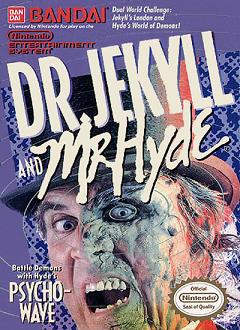
Judging from discussions at last week’s International STM Meeting in Frankfurt, some open access (OA) publishers seem to believe that author service is their defining characteristic and their differentiating value proposition.
Superficially, OA does align with certain key interests authors proclaim — wider dissemination and more papers being published — so it’s not unreasonable to make a case that OA publishers are more aligned with author interests. However, there’s more to it than that. For instance, subscription publishers also perform strong author service, so it’s not clear “author service” is much of a differentiator.
Maybe we need to clarify what we mean when we say “author service.” First, we need to answer a basic question:
What is an author?
An “author” isn’t a person, but a role a person adopts, usually for a minority of their professional life. A study published in 2002 by Mabe and Amin found that author-scientists produce less than one article per year on average, yet read nearly 100 articles full articles per year. While writing an article takes much longer than reading an article, consumption is still the dominant information mode in science, even for authors (authorship requires more intense scrutiny of the literature, after all). When you consider that only a fraction of many practitioners in many fields are authors in any given five-year period, the imbalance between roles becomes even greater.
Scientists are mostly information consumers, not information producers.
This becomes even more pronounced when you travel outside North America and Europe. In many countries with fledgling research communities but strong practitioner communities, information consumption dwarfs information production.
Because editors and publishers usually see the information producers, it’s easy to come to believe that everyone is an author. But authorship is a role with very specific characteristics, and it is not a dominant role. Other roles assumed by scholarly authors, roles that dominate their time more than the role of “author,” often include “researcher,” “teacher,” “reviewer,” “editor,” “practitioner,” or “administrator.”
The study above, entitled “Dr. Jekyll and Dr. Hyde: Author-Reader Asymmetries in Scholarly Publishing,” outlines the asymmetries between the author role and the reader role as follows:
Authors
- Want to publish more
- Think that authors will have access to electronic networks
- Peer review remains important
- Find journals attractive as an intellectual package
- Want wide dissemination
Readers
- Wish for an integrated system
- See browsing as crucial
- Regard quality of information as important
- Want to read less
The study also examined primary and secondary motives for publication, finding that the leading primary motivation was “dissemination,” but the leading secondary motivations were “improved funding,” “ego,” and “career prospects.”
As we’ve discussed here, careerism — which certainly encompasses “improved funding” and “career prospects,” and possibly “ego” — may be running wild in scholarly publishing, a state of affairs the proliferation of publishing outlets certainly caters to. How this balances with the desire of these very same people to read less in an integrated system (one-stop shop) remains a central conundrum.
Another attempt to understand the author-reader disconnect comes from Morris (1998). Morris notes that while authors and readers want many of the same things from research publications — quality, retrievability, speed — they differ on some key points. Mainly, authors want wide distribution and academic credit, which aren’t relevant to readers; meanwhile, readers want relevance and breadth.
Even within these descriptions of desires, key tensions emerge. Publish more vs. read less. Wide distribution vs. relevance. Relevance vs. breadth.
For journals that have that mythological status of “our readers and our authors are the same people,” the author-service model limitations come into starker contrast — there is no audience beyond the authors, so the pivot the editors and publishers have to make is from author needs to reader needs.
It would be nice to say that traditional publishers, through the natural focus on readers and users engendered by the subscription model, focus on more of these roles by dint of their business priorities. Many manage to do so and the incentives help, but it’s all too easy to become focused on authors, even for publishers with readership incentives. Authors are a smaller and more addressable group that works directly with in-house staff and editors. Editors possess a natural affinity for authors — they are academic and often know the authors personally or via reputation. Authors’ needs are more easily and directly met. Readers are a more diffuse and unknown group, with needs that are a bit harder to define and meet, making readers more abstract and difficult to address. Making readers feel “real” to staff and editors is a challenge for any publisher. Customer service staff can help here, as can market research — both can put you in touch with readers and their needs. But in a business that puts “author service” first and has both customer service and market research revolving around authors, it must be nearly impossible.
One special challenge for OA publishers is that they don’t know, and currently have no clear incentives to know, who their readers are. They’ve not built any mechanism for audience identification into their businesses. There is no registration, authentication, or identification that precedes usage. There is no proxy site license to judge the audience even qualitatively. This is why it’s been impossible to know whether the increased usage recorded around the OA model is meaningful — or whether outlets like PubMed Central are attracting usage publishers and editors don’t care about. To borrow the famous cartoon caption, “In OA usage, nobody knows you’re a dog.”
Publishers and editors who focus on the author role too intensely risk over-delivering to a role that is distinct, time-limited, functionally limited, and mostly incompatible with the other roles researchers, academics, and science practitioners routinely occupy, roles that the people in science usually assume. Creating a business model that purposefully drifts into author service while abandoning any chance of knowing readers seems destined to be less than robust.
Discussion
13 Thoughts on "Authors Aren't Scientists, Scientists Are Authors — Why Catering to a Role Can Inhibit Robust Publishing"
One would still think that serving the role that pays the bills is a good business plan. But then reader service comes in because authors want wide dissemination. Moreover if most subscription sales are to libraries is not the contrast between author service and library service not reader service?
Reader service and author service meet at the intersection of Wide and Relevant streets. Wide dissemination without relevance isn’t useful, and relevant distribution that isn’t sufficiently wide lacks, as well.
Libraries are paying for more subscriptions, but they measure usage, so wide and relevant distribution play a role in their value equations, as well. They are measuring readership, essentially, so there is a straight line through the library to readers.
This is all very abstract but I am thinking about the difference between having a sales department that goes after authors instead of libraries. If libraries actually reflect readers then readers go way down in the sales equation.
I also expect to see a lot of market segmentation among author groups based on different needs, something that may be totally lacking in sub sales. For example Lotka’s law says that about 60% of authors publish only one paper. They are not in the publish or perish game so probably value ease and price far above impact. Other author segments will differ.
“For example Lotka’s law says that about 60% of authors publish only one paper. They are not in the publish or perish game so probably value ease and price far above impact. Other author segments will differ.”
David – those authors typically do not decide where they publish. Those are mainly students and trainees on multi-authored papers, and the decision where to submit and how to publish will be made by the lab’ head. To put it very bluntly, single-paper authors are not an influential market segment from a publishing business point of view.
Mike
Thank Mike, I had not thought of this possibility. My idea was that they were grads publishing their thesis work before leaving academia, hence a viable market segment. Do you have any data on this or are we both guessing?
Well, in my case I would call it an educated guess, based on 15 years experience as a P.I. in academia. My field is life sciences and I head a research group comprising 10-12 students and postdocs. In my field (and indeed in almost every other field in sciences, except perhaps for pure mathematics) graduates publish their thesis work in multi-author publications with their P.I.’s as senior authors.
All is very interesting. But, I have spent a life time dealing with authors and one of the main parts of my role as an editor was to tell an author of either a book or journal article that really there is a very limited readership for their work. As I would say, not a whole bunch of folks are waiting for the latest finding regarding the homobox gene!
I find the OA model not one so much dedicated to wider readership – the number awaiting that latest article on the homobox gene has not changed weather the article is published OA or in a subscription journal. What has changed is that the author is out a few thousand dollars and the publisher is not.
I think what we need to know is how many OA articles were first submitted to subscription journals and after rejection were published in an OA journal.
Thanks Kent for an interesting article. Readers’ needs do seem to be less talked about recently yet article usefulness to them, particularly in clinical science and patient care, is critical.
An attendant point is that reader behaviour is changing greatly and that ‘# articles accessed’ is not equivalent to ‘# articles read’. Much more skimming; + automation would drive this further and away perhaps entirely from concept of ‘read’ to ‘use’.
(Disclosure: I’m a journals publisher for Elsevier.)
As someone who’s both (non-OA) author and reader, I have observed that OA publishing becomes more and more amorphous. In particular, it’s become difficult to gauge whether OA articles receive greater attention and more citations because of the quality of the research or their ready accessibility to readers. Yet the former is implicitly assumed to be the driver of relevance and impact.
For example, many OA journals boast quite high impact factors, which suggests that they indeed attract readers who use OA-published articles in their own research. But these readers may choose these articles primarily on the basis of convenience furnished by ready access via OA, and thus possibly give less consideration to the quality of the research. If this assumption is even only partly true that that means that authors can “buy” relevance and impact via the OA model, and quality in science may lose out.
It seems to me that both authors and readers are, quite simply, customers. Publishers – OA or subscription based – need to value and understand their customers in the same way as any seller of a product or service. There are numerous strategies that can enable this: segmentation, planning, needs analysis. In the world outside of publishing an author would be considered a high value customer who can be used as an influencer and brand advocate.
I disagree that discarding the subscription model necessarily means that publishers ‘abandon’ any chance of knowing their readers. There are many strategies and mechanisms that publishers can use to gather customer data: there is much that can be learned from the ‘commercial’ world here. And just because subscription based publishers have this data, it doesn’t mean they known how best to use it.
Publishers – of whatever flavour – need to become more customer-focused.



